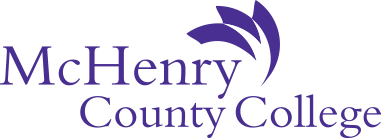Web Style Guide
The MCC websites (www.mchenry.edu and mccscots.com) are considered official College publications. As such, the websites adhere to the same standards established for other forms of published information. Design, graphics, and content must be aesthetically pleasing, well-written, well-organized, and comply with appropriate legal and college guidelines.
Online Documents and the MCC Website
Official MCC webpages provide information relating to an office, department, official service, or functional unit of the College. Webpage content should be consistent with the mission and goals of MCC and in compliance with Illinois Web Accessibility Standards.
MCC owns the copyright to content created for the MCC website, including reader-created content. Reader-created content includes mailing lists, discussion boards, forums, online chats, etc. As part of the Office of Marketing and Public Relations, the MCC web team reserves the right to regulate access to links, other servers, and the content of its website. The web team also reserves the right to remove from its server(s) any materials that are outdated, not properly maintained, or not in compliance with established policies and technical standards. The web team may also remove materials that are deemed erroneous, misleading, illegal, potentially illegal, or detrimental to the mission or operations of the College.
Planning Web Content
Identify your target readers. How many types of readers is your information relevant to? Who are they? Prioritize them.
Identify a publication schedule for the information on your web pages. How long will this information be relevant? How often will this information need to be updated or replaced?
Whenever possible, provide the web team with a monthly/annual calendar of events for your area to track the content that needs to be created for important events. Include the event name, a brief description of what content is required, the number of words required, the writer/contact person responsible, extra material required (images), and the due date for copy.
To Ensure the Readability of Webpage Content
- Write simply and clearly
- Avoid typing in all capital letters
- Write for your reader—the reader wants to know “What’s in it for me?” as soon as possible
- Keep sentences between 10-15 words, paragraphs about 50 words, and documents between 500–700 words
- Use a mobile-first approach. Prioritize information by importance.
- Write short, clear summaries that answer the where, when, what, and why
- If you can’t avoid writing a long document, provide a table of contents including headings and subheadings
- Don’t present your reader with a long list of links—show the reader only the very best links
The content author (not the web team) is responsible for obtaining and providing written proof of copyright permission from a third party to use and quote third-party content. This includes text, logos, and permission to link to other sites as needed.
- When linking to third-party websites, review the site carefully before linking. Be sure the site has the content that your reader requires before advising your reader to spend time going to another site.
- Don’t over-link to one website—creating a series of links to another website may be seen as copyright infringement.
Naming of Webpages
The web team, in conjunction with the Executive Director of Marketing and Public Relations, determines the appropriate name (alias URL) of a webpage. At all times, it is the goal to develop a name that is simple, appropriate, and memorable to the end user. When using web addresses in copy, they must always be lowercase, such as www.mchenry.edu/advising.
When writing out a URL in print publications or emails, do not use the following:
- /index.html
- https://
- The end /
Best Practice
- If you do not want the content to print out, use class .noprint
- Images should be relevant to the content on the page.
- Limit photo gallery images to no more than 20-25 to limit page size.
- Optimize images to no more than 100 kbs.
- All images require a caption or description for accessibility.
Forms
All online forms should be reviewed by IT to ensure we are using secure methods to protect student privacy. Students' personal information should not be emailed to the sender or receiver. Student/visitor personal data should be retrieved by a secure connection to a secure database.
Best Practices for PDFs
- Use PDFs as a last resort and follow guidelines for creating accessible PDFs.
- PDFs need to be no more than 5 MB and optimized for the web.
